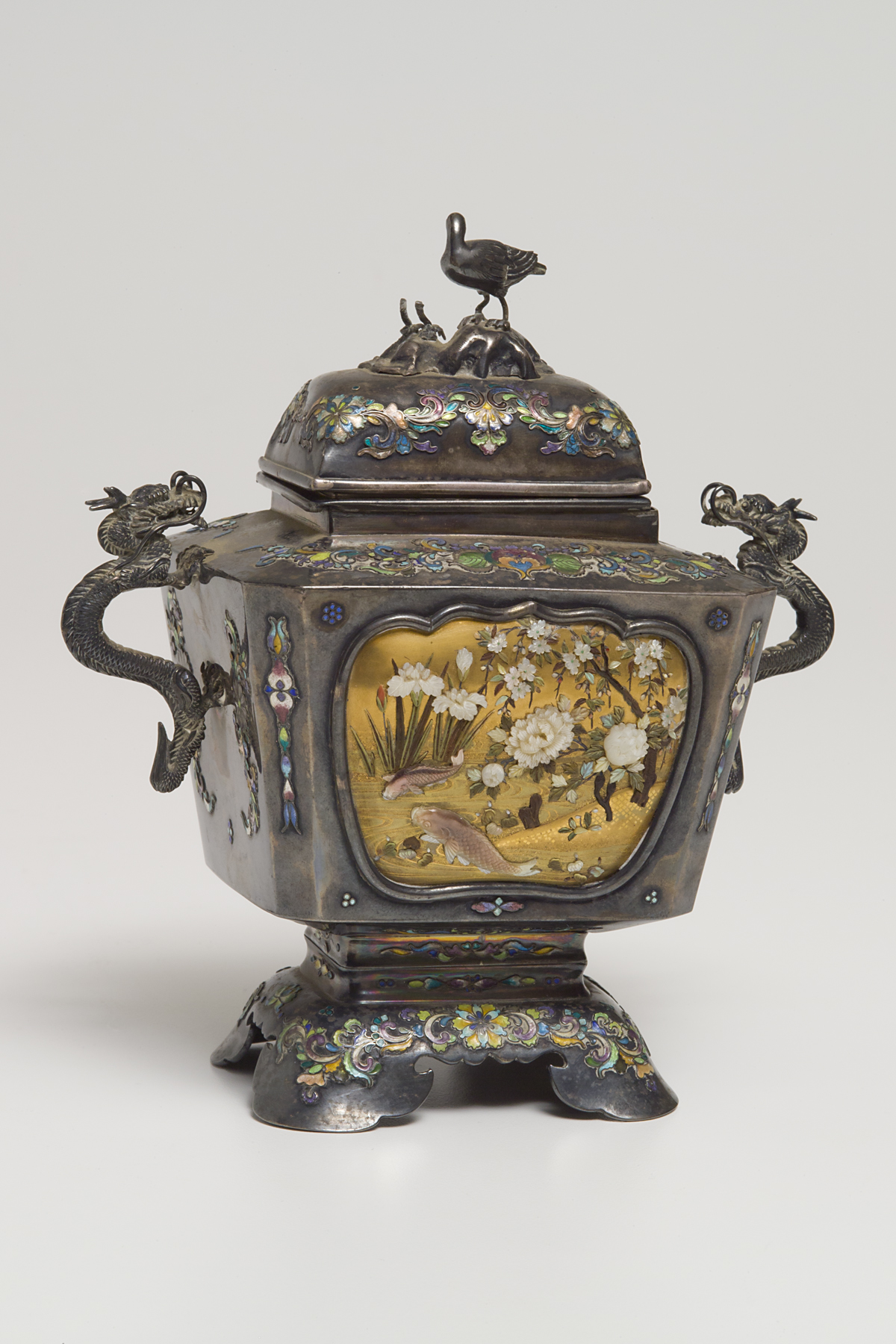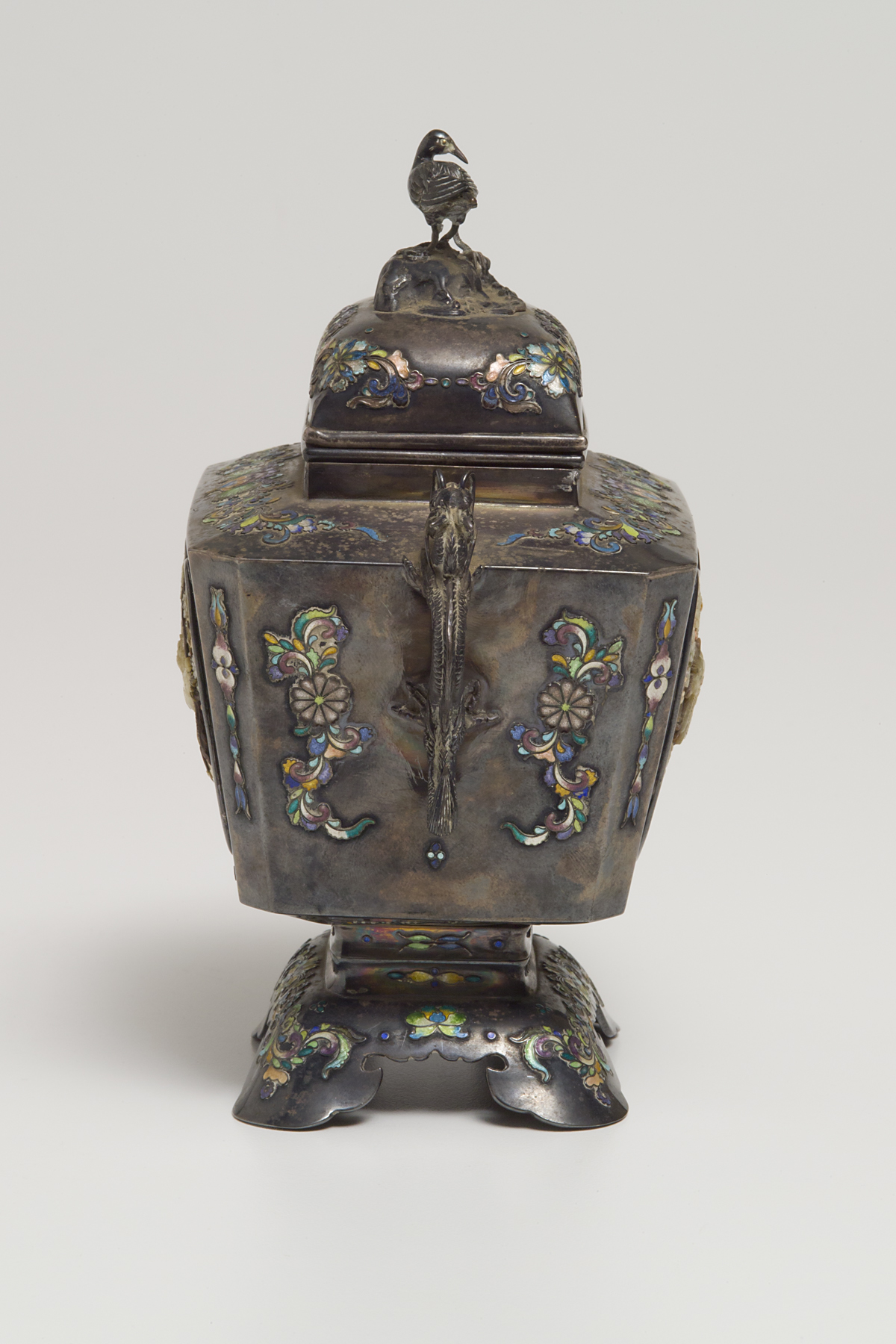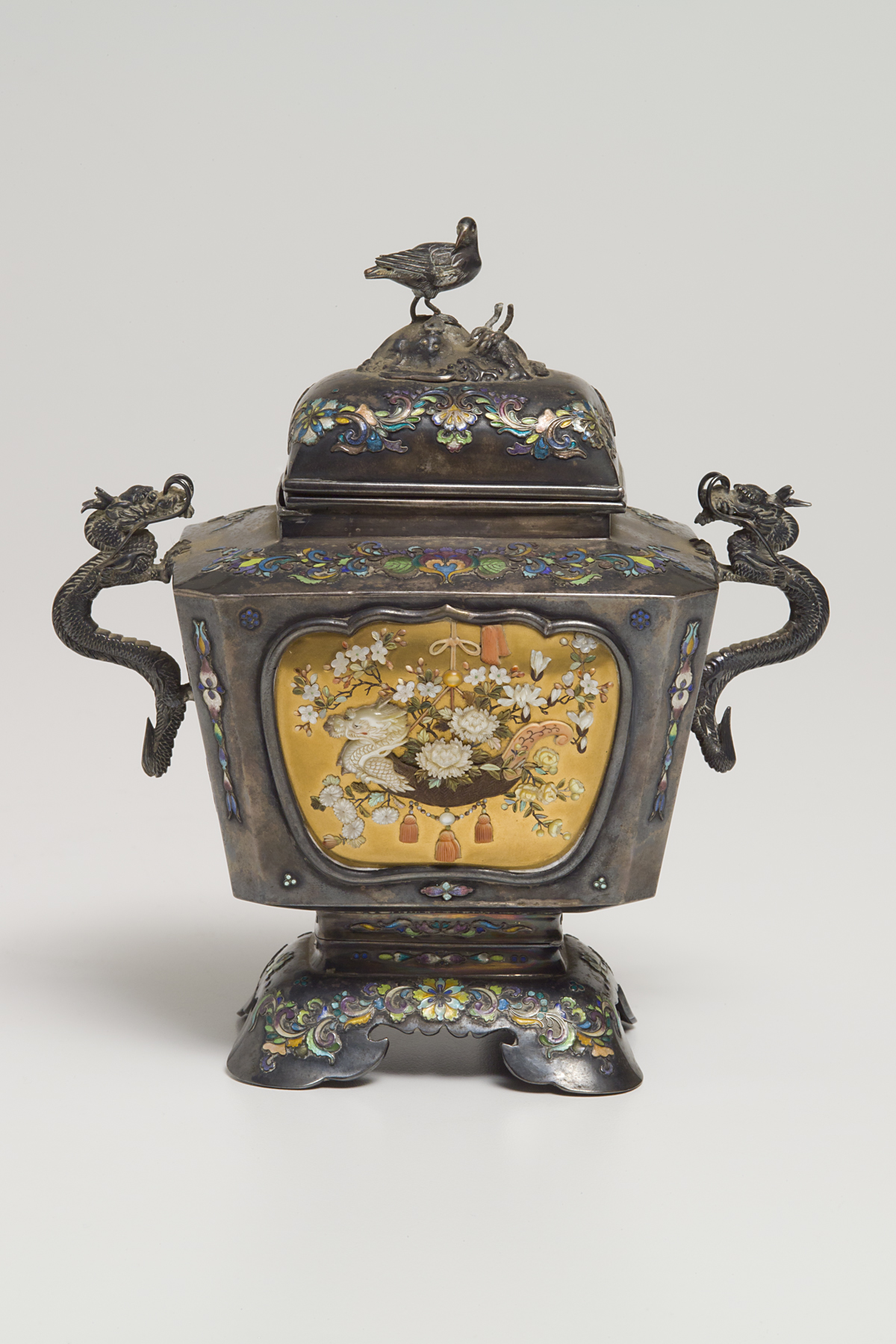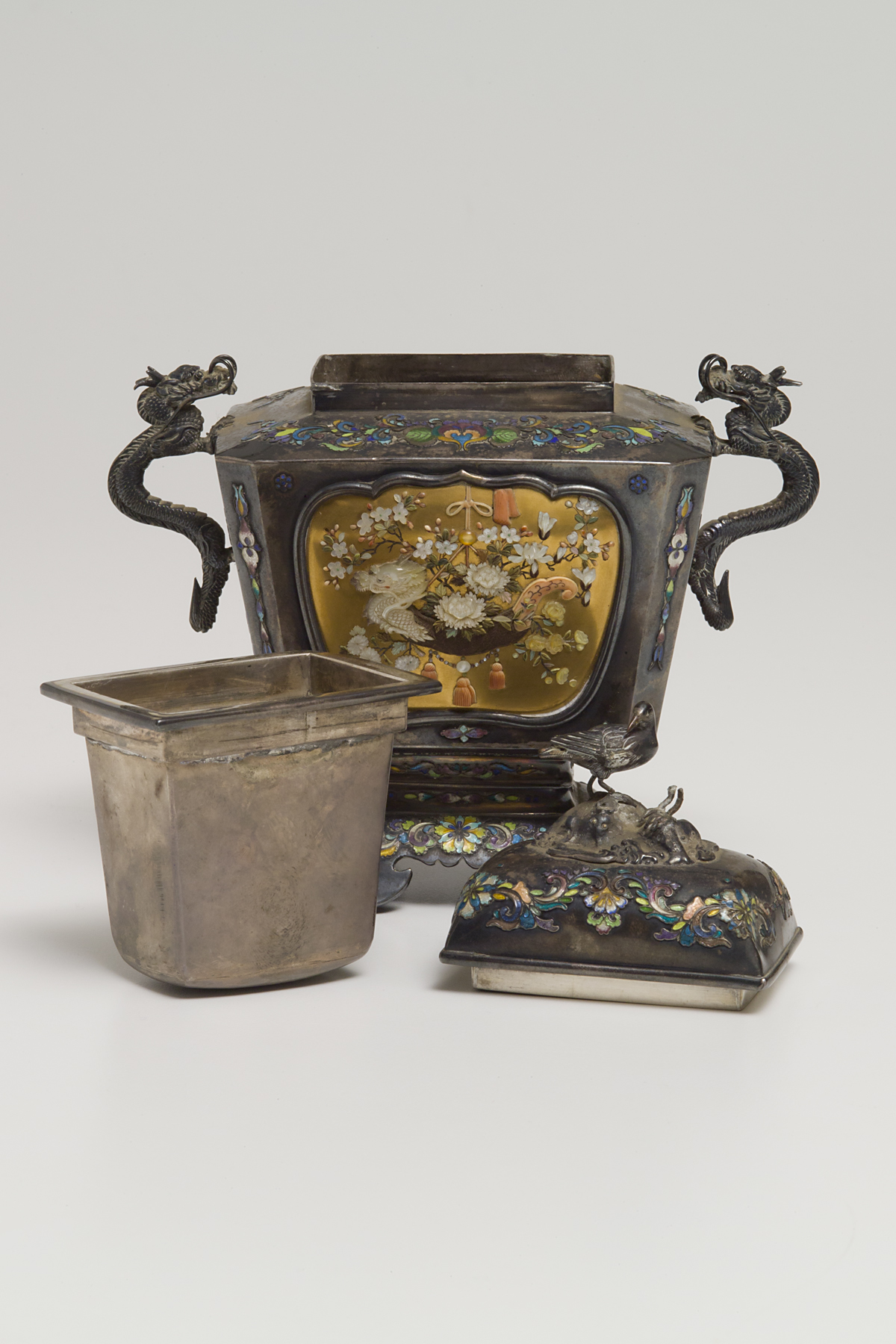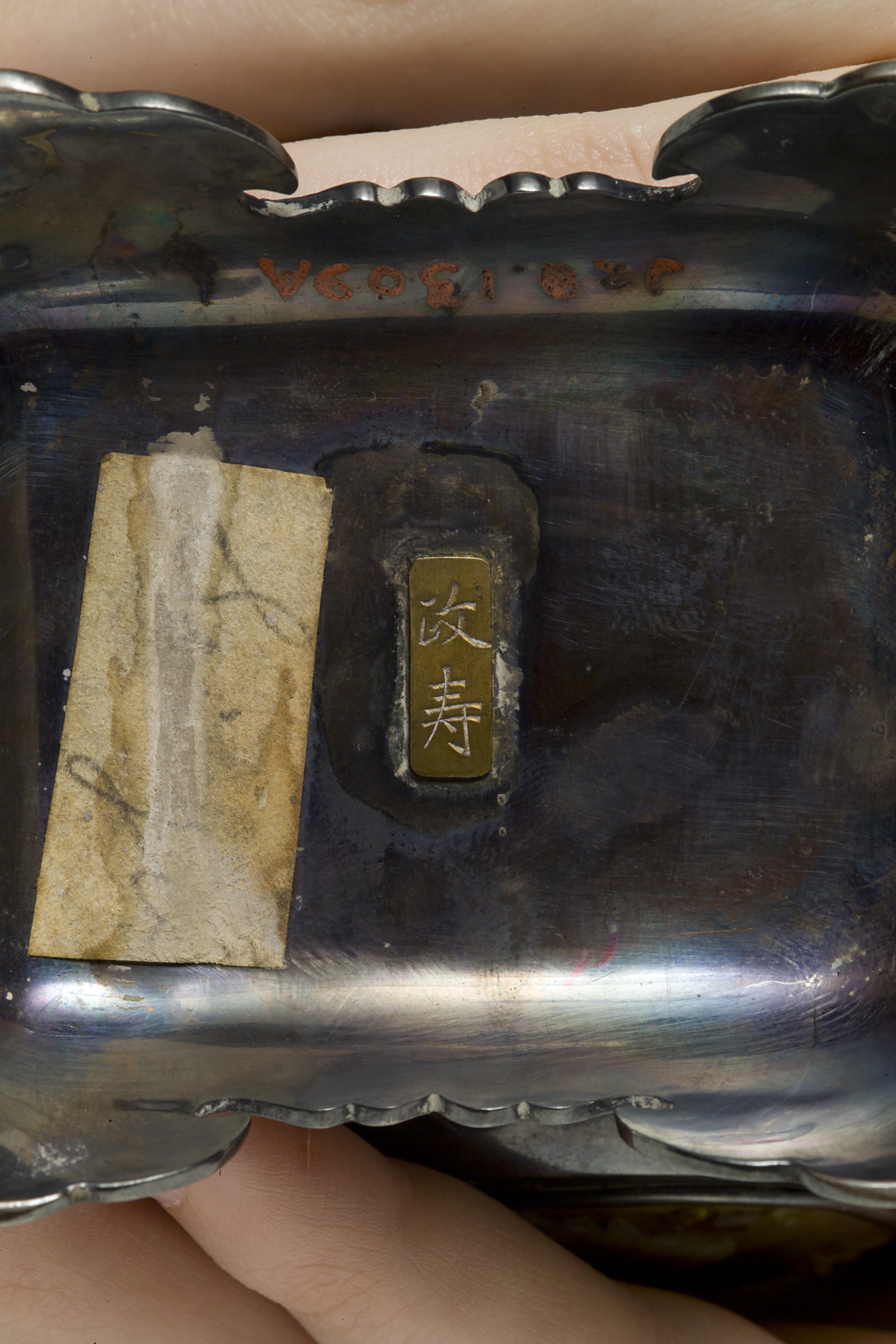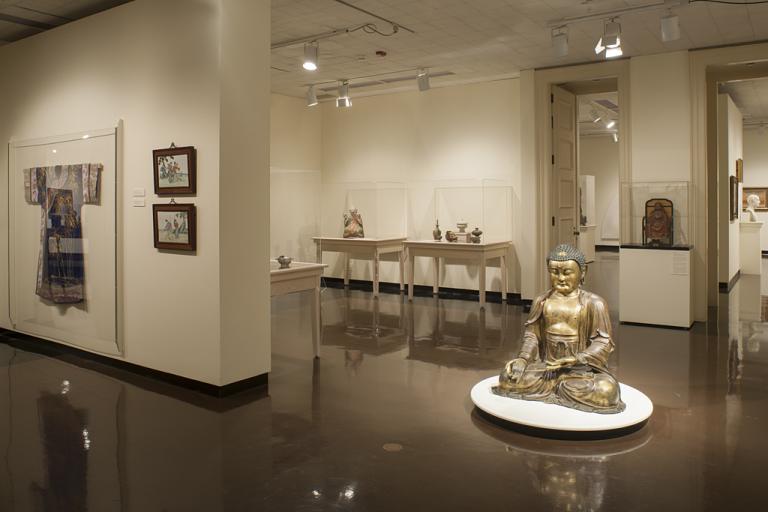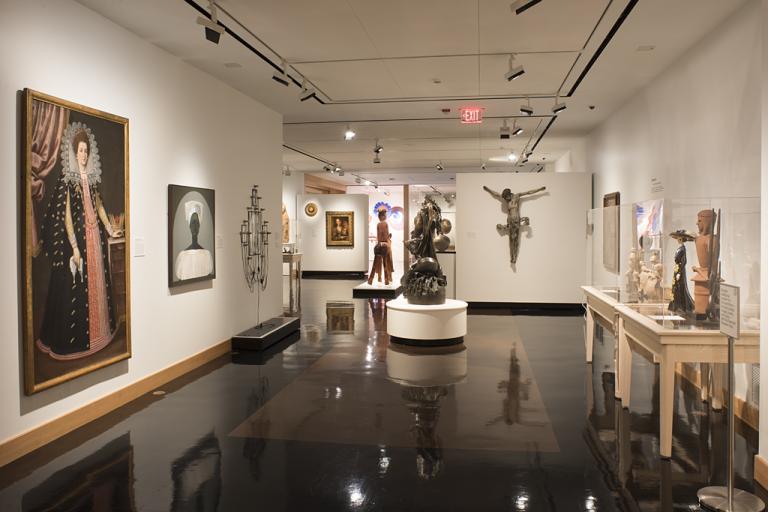香炉 koro (incense burner), Masatoshi)
Artwork Overview
Masatoshi, artist
active Meiji period (1868–1912)
香炉 koro (incense burner),
circa 1880s, Meiji period (1868–1912)
Where object was made: Japan
Material/technique: enamel; silver; mother of pearl; inlay (Shibayama 芝山); lacquer; coral
Credit line: William Bridges Thayer Memorial
Accession number: 1928.1309.a,b,c
Not on display
If you wish to reproduce this image, please submit an image request
